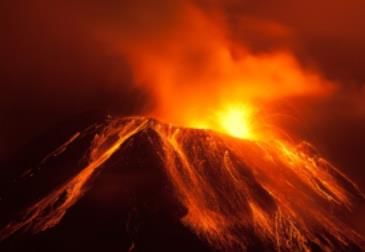Class 7 Exam > Class 7 Tests > GK Olympiad for Class 7 > Olympiad Test Level 1: Our Earth and Universe- 1 - Class 7 MCQ
Olympiad Test Level 1: Our Earth and Universe- 1 - Class 7 MCQ
Test Description
10 Questions MCQ Test GK Olympiad for Class 7 - Olympiad Test Level 1: Our Earth and Universe- 1
Olympiad Test Level 1: Our Earth and Universe- 1 for Class 7 2024 is part of GK Olympiad for Class 7 preparation. The Olympiad Test Level 1: Our Earth and Universe- 1 questions and answers have been
prepared according to the Class 7 exam syllabus.The Olympiad Test Level 1: Our Earth and Universe- 1 MCQs are made for Class 7 2024 Exam. Find important
definitions, questions, notes, meanings, examples, exercises, MCQs and online tests for Olympiad Test Level 1: Our Earth and Universe- 1 below.
Solutions of Olympiad Test Level 1: Our Earth and Universe- 1 questions in English are available as part of our GK Olympiad for Class 7 for Class 7 & Olympiad Test Level 1: Our Earth and Universe- 1 solutions in
Hindi for GK Olympiad for Class 7 course. Download more important topics, notes, lectures and mock
test series for Class 7 Exam by signing up for free. Attempt Olympiad Test Level 1: Our Earth and Universe- 1 | 10 questions in 20 minutes | Mock test for Class 7 preparation | Free important questions MCQ to study GK Olympiad for Class 7 for Class 7 Exam | Download free PDF with solutions
Olympiad Test Level 1: Our Earth and Universe- 1 - Question 1
Third layer of Earth which comes after the Mantle of the Earth is known as
Detailed Solution for Olympiad Test Level 1: Our Earth and Universe- 1 - Question 1
Olympiad Test Level 1: Our Earth and Universe- 1 - Question 2
Plates of Earth move apart from each other due to
Detailed Solution for Olympiad Test Level 1: Our Earth and Universe- 1 - Question 2
| 1 Crore+ students have signed up on EduRev. Have you? Download the App |
Olympiad Test Level 1: Our Earth and Universe- 1 - Question 3
The total surface area of earth is:
Detailed Solution for Olympiad Test Level 1: Our Earth and Universe- 1 - Question 3
Olympiad Test Level 1: Our Earth and Universe- 1 - Question 4
The planet known as Earth’s twin is:
Detailed Solution for Olympiad Test Level 1: Our Earth and Universe- 1 - Question 4
Olympiad Test Level 1: Our Earth and Universe- 1 - Question 5
The word ‘ecology’ (Ökologie) was coined in 1866 by
Detailed Solution for Olympiad Test Level 1: Our Earth and Universe- 1 - Question 5
Olympiad Test Level 1: Our Earth and Universe- 1 - Question 6
“Green Climate Fund” was proposed in which of the following environment conferences?
Detailed Solution for Olympiad Test Level 1: Our Earth and Universe- 1 - Question 6
Olympiad Test Level 1: Our Earth and Universe- 1 - Question 7
The different group of stars is known as
Detailed Solution for Olympiad Test Level 1: Our Earth and Universe- 1 - Question 7
Olympiad Test Level 1: Our Earth and Universe- 1 - Question 8
Amirata Devi Bishnoi scarified her life to the protection of
Detailed Solution for Olympiad Test Level 1: Our Earth and Universe- 1 - Question 8
Olympiad Test Level 1: Our Earth and Universe- 1 - Question 9
The moon takes_____days to complete one spin
Detailed Solution for Olympiad Test Level 1: Our Earth and Universe- 1 - Question 9
|
7 docs|68 tests
|
Information about Olympiad Test Level 1: Our Earth and Universe- 1 Page
In this test you can find the Exam questions for Olympiad Test Level 1: Our Earth and Universe- 1 solved & explained in the simplest way possible.
Besides giving Questions and answers for Olympiad Test Level 1: Our Earth and Universe- 1 , EduRev gives you an ample number of Online tests for practice


















